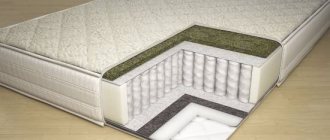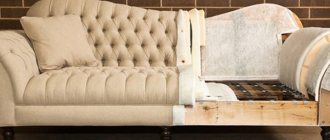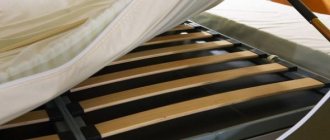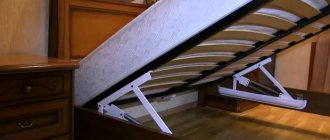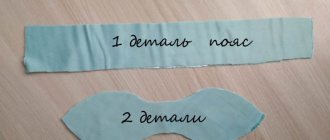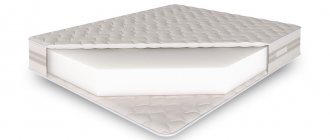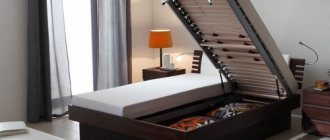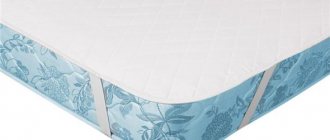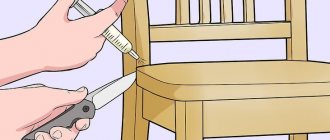The principles according to which our masters work:
- Professionalism. Our craftsmen are constantly engaged in self-improvement, which is why they provide the best repair of air mattresses in Moscow.
- Experience. In order to properly repair a mattress, you must have extensive experience working with such things. All our masters have been repairing various mattresses for several years now. That is why our technicians can fix any problem.
- Speed. We quickly carry out all repair work.
- Reliability. Many people are afraid to send their items to workshops because they are afraid that their products will be damaged. You can easily call a specialist to your home, they will repair the mattress at home. You can be confident in the reliability of our craftsmen.
Repairing mattresses in our workshop will not take much time, everything will be done quickly and efficiently, because we have the best professional craftsmen who can carry out any repair work, even the most complex. So if you notice any problem with your mattress, immediately bring it in for repair. In our workshop it will be executed in the best possible way. You shouldn’t put off repairing your mattress, because the sooner you solve this problem, the cheaper it will cost you. After all, if you solve the problem initially, when it first appears, you can avoid further breakdowns, the repair of which will take longer and be more expensive. So learn to fix breakdowns right away.
Repairing mattresses at home as a business
To start a mattress repair business at home, you don’t need to have a lot of start-up capital. But before you start working in this service sector, you need to analyze the demand market in your region and determine the percentage of competitive entrepreneurs.
The main costs will be associated with registering an individual entrepreneur, purchasing consumables and tools necessary for work. It is better to buy upholstery fabrics, fillers, substrates and shock-absorbing elements at wholesale stores or from manufacturing plants.
Spring block repair
If out of the entire array of springs there is not a single broken one, and the central or side part has only sagged a little, then only the sagging elements are replaced
. Damage to the frame is eliminated, broken springs are removed, and new ones are put in their place. The springs are fastened together using wire. The block is attached to a base of wooden slats using fabric straps, staples or nails. We remove all the old fasteners, align the springs on the slatted frame and re-secure them with nails or furniture staples. Nails 40-50 mm long should be used. To fasten the springs, the nails are driven in half their length and bent across the coil on both sides. To give additional rigidity, it is better to strengthen the spring block with a strong nylon cord. Along the perimeter of the wooden base, opposite each spring, nails are hammered into which the cord is attached. The rows of springs are alternately secured with a cord using a strapping. First, transverse rows are tied, then longitudinal and diagonally at 45 degrees. At the end of tying, the nails with the attached cord are bent.
If the location of the breakdown is a break in the steel frame, then the joint can be repaired by welding or, most simply, stuffing a copper tube
How to re-stretch a mattress if the springs are sticking out
If, after removing the mattress cover, bulging or damaged springs are found, these elements will need to be replaced. If one or two springs break, it is enough to remove them and replace them with new ones. But if a whole series fails, you need to make one of two decisions:
- Completely replace the spring block. This option is simple and reliable, but requires little investment.
- Partially replace the block. In this case, it is necessary to disassemble the old base in order to get to the springs on both sides. Then the broken products are taken out and new ones are installed in their place.
When partially replacing a block, cut off the metal wire at the edges that holds the rows together, and then unscrew it counterclockwise.
How the mattress works
A mattress with dependent springs consists of a metal frame on which springs are installed, rigidly fastened together and forming a single block.
The structure of a mattress with dependent springs
The most common is the Bonnell spring unit, invented more than 150 years ago, which contains from 120 to 160 springs per square meter. The spring consists of coils of different diameters - maximum at the edges and tapering towards the center. Thanks to this, they do not rub against each other and do not make increased noise.
Mattress based on Bonnell dependent spring block
The most common are five-turn steel springs made of hardened wire; four-turn springs are less commonly used. Dependent spring blocks are used in the production of upholstered furniture - sofas, ottomans, and are also produced for the production of mattresses for beds.
This block system consists of spring elements of a special cone shape, which are fastened together with a spiral wire made of hard carbon steel
This type of mattress is still in great demand among buyers due to its practicality and durability. The cost of this product is 30–40 percent lower than independent spring mattresses.
In a mattress with independent springs, which are called orthopedic, the springs are in covers made of non-woven material, which are glued together into a single block.
Bed mattress based on an independent spring block
With this scheme, the load is distributed more evenly, which allows the body to take a natural position when sleeping.
In this system, each spring element in the shape of a cylinder or “barrel” is located in its own special case made of thick fabric or elastic materials
An orthopedic mattress prevents the occurrence of back diseases, the sleeper’s blood circulation is not impaired, and a person wakes up in the morning rested, without pain.
Independent spring block for orthopedic mattresses
The greater the number of springs used per square meter, the more pronounced the orthopedic effect.
There are 3 types of hardness:
- high, recommended for weights over 95 kg;
- average, weight from 60 to 95 kg;
- soft, weight up to 60 kg.
According to the number of springs, mattresses are divided into:
- multipack TFK, with 250 springs. per square meter;
- multipack S 1000–500 pcs.;
- multipack S 2000– 1000 pcs.
Types of springs for independent blocks
This is interesting: Repairing geysers with your own hands (video)
Devices with continuous weave springs
In this case, we are talking about a standard product, which contains a block with independent springs. Let's consider the main features of such accessories:
- Such an orthopedic mattress has a long service life.
- The load is distributed evenly across all elements.
- Damage to an individual spring does not lead to loss of functionality of the remaining springs.
- There is no standard alignment and fastening.
- The springs are mounted directly to the frame.
- Repairs do not require complete removal of the casing.
- Built-in elements are not very expensive.
- You can repair such a mattress yourself.
As a rule, restoring such a mattress with your own hands involves identifying the fault, gaining access to the problem area, removing the component and installing a new device.
Important. Despite the widespread use of such devices, they quickly lose elasticity under the constant influence of heavy load on a certain area.
Step-by-step diagram of how to repair a mattress yourself
- When performing repair work on a spring mattress, the product is turned over with the surface covered with the upholstery facing down. It is best to place the mattress on four stools so that free access to any point in the mattress is maintained. Next, you need to remove the nails, paper clips and other fastening elements. Next, remove the thread.
- The flooring needs to be replaced. The fabric that acts as insulation for the springs is also cleaned. Next, all the springs are checked, according to the proposed video, after which they are installed in the optimal position. In this way, each of the springs is released by cutting the strapping and removing the nails on which the frame is attached.
- The springs are placed in a vertical position.
Their ends are placed on the same line. This line should run 10 cm above the frame level. Defective, torn or loose elements of the mattress must be pressed against the slats and secured with nails. - When the old springs are attached to the wooden slats using fabric-based straps, the straps are removed and the springs are installed in accordance with the above technology. However, instead of slats, well-tensioned fabric-based belts are used, which are secured using wooden slats.
- Initially, slats are cut out, the length of which will correspond to the length of the mattress. The width of the slats is 10 cm, and their thickness is 2 cm. After this, it is necessary to form grooves for the slats in the places indicated on the frame of the product. Next, you need to nail the slats on all sides of the mattress.
- After the springs are installed, in accordance with the requirements of the rules, they are tied.
The upper part is tied with a rope with a diameter of 2-5 cm. After this, you need to drive in nails according to the diagram in the image. The length of the nails should be within 5-6 cm. First, the springs of the transverse row are tied by fastening with a cord. During restoration, make sure that the tension level of the cord is not too high. Since if the cord is strongly tensioned, an excessively tight fit of the springs may occur. - Having processed all the rows, the same actions should be taken regarding the longitudinal rows. It is worth noting that the serial connection should be done diagonally. It is performed at an angle of 45 degrees. Having completed this process, the nails driven along the edges of the product must be bent.
- The last step of the restoration is to check the length of the springs (they must be the same size).
Next, the mattress is covered with fabric for lining, according to the photo image. Fastening the fabric is done with nails. An alternative option is to use a stapler. At the final stage of restoration, the foam layer is laid and attached to the covering fabric.
Repairing a spring mattress with your own hands does not look like an impossible task even for an inexperienced craftsman. To repair it yourself you need to follow a number of steps:
1) First, let's disassemble the mattress. In view of the possible accumulation of dust in it, it is better to do this outside, if, of course, there is such an opportunity. Otherwise, you can resort to using a vacuum cleaner.
2) next you need to place the mattress on stools so that it can be approached from any side. Then we remove all the nails, paper clips, outer fabric, soft cushion and thick fabric that insulates the springs.
3) then we proceed to the springs. You need to release them from the mattress frame by cutting off the cord binding. Next you need to set all the springs in a vertical position and check the location of their upper ends. They should be at the same level, approximately 8-10 cm above the frame. Check all springs for wobble and swing - if any, they should be attached to the wooden yard using regular nails.
4) The next stage (when all the mattress springs are attached to the frame) of repairing a spring mattress will be tying the springs. This is done using any strong soft cord, approximately 2-5 centimeters thick. Opposite the rows of springs, you need to hammer in large nails (50-60 mm) and bend them slightly. Next, we perform transverse and longitudinal tension on the belts (cords) prepared earlier.
5) Next you need to check whether the springs are the same length. If so, cover the mattress with lining fabric and secure it around the perimeter with nails. Next, we place a roller made of batting, foam rubber or padding polyester, and attach it to the lining fabric. Well, we wrap the spring mattress on top with decorative fabric!
The repair has been completed!
Repair of Bonnell type frame spring mattress
In our century, one-sided frame mattresses have practically fallen out of use. An alternative to frames built into the mattress are mobile orthopedic bases with lamellas, which allow you to place any model on them - spring or springless. Most likely, in your modern apartment, all household members have been sleeping on such bases and individually selected mattresses for a long time.
But the Russian man is practical! Having made repairs, he is in no hurry to part with the sofa or the old-style frame mattress. He will take the pieces of furniture to the garage or to the country house, saying that later I will decide what to do with them. In fact, in times of economic crisis, this approach is justified. Well, it’s time to give a new life to the old frame mattress and install a renovated, now quite worthy piece of furniture in a country or rural house.
Preparation for repair
The average lifespan of a regular mattress is 5-15 years. The length of service life, as a rule, depends on the conditions in which the product is kept. If it loses its properties, it must be replaced with a new one. However, if you want to save money on your purchase, you can resort to repairs.
What to do if a spring breaks?
First of all, you need to prepare your tools. For this you may need:
hammer;
- nails;
- foam roller;
- stapler;
- upholstery;
- several slats;
- textile.
During operation, debris may appear, especially dust in large quantities. Therefore, it is recommended to carry out restoration outdoors. If the whole process is carried out indoors, you should prepare a vacuum cleaner in advance.
DIY repair steps
- When carrying out independent repairs of spring mattresses, you should turn the product over with the side covered with upholstery material facing down. Place it on four stools so that there is free access from any side. After this, nails, paper clips, etc. are pulled out of it, and the fabric is removed.
- Since the flooring is completely replaced, the old one is thrown away. The fabric, which is an insulating material for the springs, is also cleaned. Then all the springs are checked, as shown in the video, and then they are set in the desired position. This operation involves releasing each spring by cutting off the binding, as well as removing the nails from the frame to which they are attached.
- The springs must be set in a strictly vertical position. Their ends are located at the same level, and should be about 10 cm higher than the frame. All damaged parts that are loose or have been torn off are pressed against the slats, and then secured with nails, bending them.
- If the old springs are attached directly to the wooden slats using fabric straps, these straps are removed, after which the spring set is installed in the same way as described above. However, instead of slats, stretched fabric belts can be used - they are subsequently securely fastened using wooden slats.
- First, slats are cut out, each of which has the same length as the mattress. Moreover, their width is 10 cm, and their thickness is 2 cm. Next, you should cut out grooves for the slats at those points that are marked on the frame itself. The next step is to nail the slats on each side.
- Once the springs are secured as required by the rules, they are tied. The upper part is securely tied with a cord, the thickness of which is from 2 cm to 5 cm. Next, nails are driven into the spring mattress, as shown in the photo. Their length should be on average 50-60 mm. The springs are first tied in each transverse row - for this, fastening is done using a cord. During the process, you need to make sure that the cord is not stretched too much, otherwise this may cause the springs to fit too tightly.
- After all rows have been processed, a similar process is carried out with longitudinal rows. In this case, the last strapping should be done diagonally. It is produced at an angle of 45 degrees. At the end of this procedure, the nails that are hammered along all edges must be bent.
- At the last stage of repair, you should check whether all springs are the same length. After this, the mattress is covered with lining fabric, as in the photo. It is secured completely around the entire perimeter using special upholstery nails. As an alternative, you can use a stapler. The repair of mattresses is completed by laying a foam roller and then attaching it to the fabric at several points.
After DIY repairs, the upper part of the spring mattress is covered with fabric. Decorative material can be used, the edges of which are carefully tucked in.
As a result of the work done, you can get a more rigid sleeping place than it was before. At the same time, it will provide a comfortable immersion that will occur on the other side of the mattress. This will make it look like a modern orthopedic mattress.
Typically lasts from 5 to 15 years depending on operating conditions. After losing its comfortable properties, it must be replaced with a new one. Alternatively, you can repair the old one.
Fastening
The stage that requires the most effort and time. It includes several steps:
- checking the serviceability of parts;
- frame installation;
- spring binding.
First, remove the cord connecting the springs and remove the nails from the frame. Then you need to inspect the springs and return them to their original position. Broken parts are thrown away and new ones are installed. To do this, the springs are nailed to the slats using nails that are bent inward. It is first recommended to make precise markings on the body of the product.
It should be taken into account that in orthopedic mattresses the individual springs are located in special bags
. And in conventional ones there are three methods of fastening:
- using wooden slats. Sometimes it is enough to simply hammer a loose part;
- the use of fabric straps over wooden slats;
- fabric belts. They give the mattress orthopedic properties.
If fabric straps were used in the manufacture of the mattress, you will need to cut out the wooden slats yourself. Elastic fabric straps are attached to them. The length of the slats should correspond to the width of the mattress.
To replace the spring bag in orthopedic models, you will need an element with new springs. It is sewn in using a regular needle and strong thread.
Harness
After checking and securing the springs, the strapping process is carried out. For this purpose you will need a strong rope (diameter about 3 cm). First, take nails and drive them opposite a separate spring row. Then the nails are bent to create peculiar hooks. The cord will be wound around them.
First of all, you need to deal with tying the transverse springs. Each spring is processed separately with a cord. Then they begin to tie the elements in the longitudinal direction. For efficiency reasons, they are fastened with transverse ones.
Finally, the springs are processed diagonally. The angle with respect to the previous harnesses should be 45 degrees. At the end of this work, the nails left by the hooks are completely bent.
Necessary materials
The choice of tools depends on the cause of the damage. To replace the upholstery by hand, all you need is glue and a matching fabric. If the integrity of the springs is damaged, you will have to stock up on new parts. The main things you will need during a major overhaul are new upholstery, a hammer, and nails.
You'll need:
- furniture stapler;
- elastic cord;
- filler (foam rollers);
- decorative cladding;
- lining (any breathable and durable fabric);
- slats (7 x 2).
When troubleshooting, it is important to also have pliers and wire on hand. All work is divided into several stages
First, the mattress is disassembled, then new springs are installed, the binding is made, and finally the product is sheathed (assembly).
Disassembling the mattress
The best place for repairs is a barn or other non-residential premises. During the period of operation, dust and particles of debris accumulate inside the product. Therefore, a good option is to use a vacuum cleaner when working.
First, the mattress is turned over with the outer surface down. Position it to ensure a flat surface. To make it easy to approach the mattress from each side, it is placed on four stools. Next, carefully free the product from its contents: remove old nails, remove paper clips with pliers, remove the decorative fabric of the upholstery and take out the soft rollers.
Spring block repair
If out of the entire array of springs there is not a single broken one, and the central or side part has only sagged a little, then only the sagging elements are replaced
. Damage to the frame is eliminated, broken springs are removed, and new ones are put in their place. The springs are fastened together using wire. The block is attached to a base of wooden slats using fabric straps, staples or nails. We remove all the old fasteners, align the springs on the slatted frame and re-secure them with nails or furniture staples. Nails 40-50 mm long should be used. To fasten the springs, the nails are driven in half their length and bent across the coil on both sides. To give additional rigidity, it is better to strengthen the spring block with a strong nylon cord. Along the perimeter of the wooden base, opposite each spring, nails are hammered into which the cord is attached. The rows of springs are alternately secured with a cord using a strapping. First, transverse rows are tied, then longitudinal and diagonally at 45 degrees. At the end of tying, the nails with the attached cord are bent.
If the location of the breakdown is a break in the steel frame, then the joint can be repaired by welding or, most simply, stuffing a copper tube
Spring mattress repair
You can repair a spring mattress yourself. To do this, you need to prepare a number of tools and follow step-by-step instructions. There are no particular difficulties in the restoration process, with the exception of the restoration of non-standard surfaces where not ordinary springs are installed, but all kinds of snakes. Repairing such mattresses is much more complicated and requires an individual approach. If you do not have the skills to carry out repair work, you will need the help of a specialist.
In other cases, you can repair the structure yourself. The presence of broken springs indicates the need to purchase new ones. If the whole unit or all the spring elements fail, you may have to buy a new mattress. But in case of partial damage, it is possible to purchase high-quality spare parts of a suitable shape and size. You can purchase springs in the store where you bought the sleeping surface or in any furniture hypermarket.
Summing up
Do-it-yourself spring mattress repair is cost-effective. If you approach the repair of an old Bonnell-type mattress meticulously and thoroughly, the final result may surprise you.
If the mattress is badly damaged or you are categorically not satisfied with its characteristics, it is better to look at a more modern option, for example, a model with a block of independent springs.
Mattresses with continuous weave springs
Mattresses with springs tied into a block are a classic design that can be found in almost any home. The shock-absorbing elements of such models are made of high-carbon steel and are fastened together with steel wire. Their main advantage is their low price, and their main disadvantage is the lack of orthopedic properties.
p, blockquote 26,0,0,0,0 —>
p, blockquote 27,0,0,0,0 —>
The production of mattresses is carried out in factories using semi-automatic machines. Therefore, it is impossible to buy shock-absorbing elements for them individually, unless you remove them from another mattress. But if the only problem is that a depression has formed on the product, then you can use the old method and tie the springs. This will align all shock-absorbing elements in one plane, give the product elasticity and extend its service life.
p, blockquote 28,0,0,0,0 —>
The binding of mattress springs with continuous weaving is carried out in stages:
- Hammer construction staples into the wooden frame opposite each spring row.
- Thread the binding cord into the staples. To do this, you need to use durable synthetic twine.
- First stretch the cord between the springs in the transverse rows, then tie the longitudinal shock absorbers and move on to strengthening the diagonal row.
- Hammer all the staples with twine threaded through them.
p, blockquote 29,0,0,0,0 —>
When tying the springs, you need to make sure that their height along the plane is the same. In sagging rows, the tension should be stronger.
Stages of the recovery process
Lack of skills in restoring spring mattresses is not a reason to refuse to do it yourself, especially... if you want to get down to business! By deciding to restore the product yourself, you can significantly save money, which would be better spent on purchasing materials for repairing a sofa or mattress. And you will definitely need them. You may need:
- Construction staples, nails, stapler, hammer
- Strong twine for tying (not jute, but synthetic!)
- Sheet of filler material to replace the interlayer (PPU, coir, struttofiber)
- Cushioning material placed between the spring block and the filler layer (non-woven fabric, spunbond, linen, hard felt)
- New upholstery fabric for exterior cover (as needed)
- Wood slats
- Springs
From the list-list, new springs are usually the hardest to find. The reason lies in the block production technology. The name of the design explains it: a block with continuous weaving. The production and assembly of blocks is carried out in factories and not manually, but on automatic and semi-automatic devices. Therefore, it is problematic to find separate springs for such a block on sale.
If you don’t have contacts at the Bonnell block factory, you can use intact elements from another mattress to replace one or more springs.
Stage 1. Disassemble the mattress - assess the situation
Please note that over the years of use, a large amount of dust has accumulated in the mattress. Therefore, it is better to disassemble the product outside the home. Dismantling work can be carried out in the garage, at the dacha or directly on the street.
- Before you begin, thoroughly vacuum the upholstery and assess its condition - whether it can be reused or not.
- Place the mattress on a table or four stools with the base upside down.
- Next, depending on the decision made regarding the future “fate” of the outer skin, choose a method for removing it. If the fabric cannot be reused, you can simply tear it off with sharp movements, then fold it and throw it in the trash. If you decide to keep the upholstery, wash it and reuse it, you will have to approach the removal more carefully (without tearing it off, but removing each fastening bracket or nail individually). Important! Be careful when dismantling old fittings. In order to later install it in its original place without any problems, you can make notes along the way with a marker.
- Next, we evaluate the condition of the flooring (the soft layer between the spring block and the outer skin). Most likely, it will be discovered that the service life of the layers of flooring (felt, foam rubber) has long been exhausted and requires immediate replacement.
- After removing the flooring, carefully vacuum the spring block inside.
- We inspect the side frame (if there is one).
- We inspect the base (bottom).
Advice! If in the design of your mattress the role of the base is performed by belts, bodice or elastic rubber bands, it is better to replace them with wooden slats. To do this, prepare wooden slats of the required size. The slats should be secured in the same places where the tapes were attached.
Stage 2. Assess the complexity of damage in the spring block
After dismantling the main parts, you can proceed to assessing the condition of the spring block. Carefully inspect it for dents, weakened or burst springs. Since the unit with the dependent system was not made manually at the factory, the word “repair” will rather mean a number of life hacks and tricks. The real repair of the Bonnell block (in the case of burst or severely deformed springs) consists of its complete replacement. If this is not possible, you will have to tinker with replacing individual elements.
Reference! If the spring block is seriously damaged, you can save time and simplify the task by replacing the spring block with a springless filler. Getting PU foam for a mattress today is not a problem. The main thing is to take time and understand the brands in order to buy material of sufficient density and rigidity.
Stage 3. We tie the springs
If the spring block is not damaged, the wooden frame and base are intact (or can be repaired), and the problem is mainly sagging, the solution will be the proven “old-fashioned” method - tying the springs. This technique will allow you to “pull” weakened springs to a common level, level the plane, give elasticity to the mattress and extend the life of the product.
Reference! The springs are tied using durable synthetic twine.
- We hammer construction staples into the top slats of the side frame (if the frame is wooden) (not completely) opposite the rows with springs. It is to these “loops” that the binding cord will be attached (at the beginning and at the end of each row of springs) to secure the harness to the frame.
- Next, we proceed to tying the transverse (short) rows.
- Then we move on to long longitudinal rows.
- Finally, we perform a diagonal strapping. Important! As you proceed with the strapping work, make sure that the height of the springs is the same (in sagging areas, pull the twine tighter). At the same time, the cord tension should not be too tight. The harness should not pull the springs too tightly together. It is important to catch and feel the tension.
- At the end, we hammer in all the staples on the wooden frame (through which the twine is threaded) until they stop.
Stage 4. Restoring the springs
If, after opening the casing, it turns out that the springs are broken, you cannot do without replacing the elements. If one or two springs are broken, it is enough to replace only them. Unfortunately, as a rule, in blocks of old mattresses you can find entire rows of broken springs in the central part of the mattress (the part that was subjected to the greatest stress). There are two options to solve the problem.
- Complete replacement of the spring block. This method is more reliable and simple, but requires the presence (or purchase) of a similar working unit.
- Partial block replacement. In this case, you will have to dismantle the wooden frame to provide access to the spring rows on both sides. After this, the damaged area is removed and a new one is installed in its place.
Advice! When performing a partial block replacement, cut the edges of the metal spring binding wire that holds the rows of main springs together and unscrew it counterclockwise. After removing the old one and installing the new element into the block, screw it back in.
Stage 5. Restoring the casing
To upholster (cover) a sofa or frame mattress accurately, you will need a furniture stapler.
- First we lay the substrate, the so-called “drum”. Reference! This is a fabric (you can use the old one), which is stretched directly onto a spring block and secured with a stapler to a wooden frame.
- On top we lay a softening layer (or several) - polyurethane foam, coir.
- To prevent the wooden frame from breaking through the new fabric, we put padding polyester (thin foam rubber) on the corners of the slats. This will also add comfort while sitting on the mattress.
- Lastly, we cover the repaired product with furniture fabric.
- If the bottom of the mattress was sewn with a backing, install it in its original place.
Products using springs
Spring models are easy to make. It is worth using purchased springs. It’s easy to choose them by asking the store for special materials for making furniture. If you do everything correctly, you will get an orthopedic mattress with your own hands. Sometimes it is enough to use springs from an old mattress or sofa and make new upholstery. It is recommended to use foam rubber. It’s easier to create an orthopedic mattress with your own hands if you have:
- Spring mechanisms;
- Dense material;
- Foam rubber.
To make your own mattress you will also need twine. They need to tie the springs tightly together. Afterwards, display your structure and place it under the bottom of the slats. Pin. Spring structures add density to the product. Afterwards you need to use filler. Pull the cover on top. Do-it-yourself orthopedic mattress is ready.
So, to make a mattress with your own hands, you don’t need to make a huge effort
But it is important to be able to cut the material by making the correct measurements. It is necessary that the density of the foam rubber be high
Spring designs are also popular, but their manufacture will require more time, skill and material. An orthopedic option that is suitable for any person will be more convenient.
Tool preparation
Before you begin repairing a mattress, you need to stock up on the necessary materials and tools. Depending on the damage, you may need:
- Glue.
- Scissors.
- Threads with a needle.
- Sewing machine (if the cover is completely replaced).
- Upholstery fabric.
- Filler. It can be purchased in specialized stores (for a partial replacement, you need to purchase the material with which the mattress was stuffed; for a full replacement, you can take the one you like and helps improve the sleeping qualities of the product).
- Spare springs (sold in specialized stores). You should buy a replacement part of the same brand that is installed on the mattress. Installing unsuitable springs will reduce its orthopedic qualities.
- Pliers.
- Wire.
Having prepared everything you need, you can begin repair work. But it should be remembered that over the years of service, a lot of dust has accumulated inside the sleeping item. Therefore, it is advisable to replace springs or filler at home in non-residential premises or on the street, and if this is not possible, then the mattress must be thoroughly vacuumed before ripping out the upholstery.
Tools needed for repairs
The choice of tool depends on the damage to the mattress. If you need to replace the upholstery, you will need glue and a fabric of suitable size and structure that will not tear after several months of use. If the problem is in the metal structure, you will have to buy new springs to repair the mattress.
Materials and tools that may be needed for repairs:
- Metal wire or elastic cord.
- A backing that can be used with any durable and breathable fabric.
- Wooden slats 70×20 mm.
- Decorative cladding.
- Nails, hammer.
- Furniture stapler.
- Decorative cladding.
- Thread, needle or sewing machine.
- Glue gun.
- Scissors.
- Pliers.
Repairing or restoring a spring mattress for a bed with your own hands involves: removing the upholstery material, replacing the necessary elements, tying the springs and final covering.
Mattress cover
When all the springs and fillers are in order, it is time to create a new cover. This is not required, but recommended. After all, the fabric in the bed is a breeding ground for mites and harmful microorganisms. And since you can’t boil the cover, you need to replace it with a new one! It can be bright and optimistic, but psychologists and sewing technologists recommend light-colored upholstery, since it does not strain the eyes and does not show through white sheets.
Meaningful choice
When searching for “spring mattress repair in Moscow,” a lot of advice appears on how to do it yourself. But it's better not to do this. Because any furniture must be disassembled by someone who knows how to assemble it. Experienced craftsmen always have special tools and technologies at hand that the average person does not have. Therefore, it is better not to create unnecessary problems for the craftsmen, but immediately, without independent intervention, take the repair object to the studio.
For those who cannot transport bulk cargo, special conditions apply for delivery by the studio. And this is an important plus when choosing a restorer. Well, the main thing is that the price is very reasonable even for a family with a modest income.
Want to make sure? Get ready to name the dimensions of the bed and call the studio right now!
How to extend the life of a mattress
It is clear that one mattress is unlikely to last you a lifetime. Over time, it will still need repairs. But we note that the moment when there is nowhere to go can be delayed for a very decent period. To do this, you need to use this piece of furniture with the utmost care. Try to avoid situations that could damage it.
- You need to buy a mattress according to your weight
- Don't let children jump on the bed\
- Never eat or drink while lying on the bed
- Be sure to let the item dry and ventilate in the fresh air at least once a year.
- The mattress should only be placed in the places intended for it
- To prevent the decorative covering of the mattress from getting dirty, use additional removable covers
If you carefully follow all these simple rules of operation, then your mattress will serve you for many years, and its repair will not be needed very soon. This is a guarantee that your sleep will be healthy and sound.
The article was prepared with the help of specialists from the Sleep Laboratory. Website: https://sleep-lab.ru/ - Online mattress store.
Video. Spring mattress repair
Sheathing of the product
The final stage of repair is reupholstering the mattress with outer upholstery. To do this, first cover the spring block with a lining. The material must be dense, for example, tarpaulin (burlap or dermantin is also suitable). So, the lining base is placed on top of the spring block and secured with it with a regular stapler.
Then take a sealant (foam rubber, padding polyester). These rollers are placed on the lining in selected places. This ensures high-quality styling. The top of the mattress product should be covered with decorative fabric, and the edges of the upholstery should be carefully tucked inward.
Types of faults
There are two types of spring mattresses: with an independent spring block and with a continuous weave of springs. Modern orthopedic mattresses in most cases are equipped with separate blocks of springs; continuous weaving is found in old-style mattresses.
During repairs, the user may encounter various breakdowns:
- the need to replace external upholstery or sealing material;
- disconnecting the spring from the base;
- deformation of the spring block;
- cracks in the mattress frame.
A number of tools are required to carry out the work:
- hammer and pliers;
- nails (regular 50-60 mm and furniture);
- clamps;
- stationery knife or scissors;
- needle and strong thread (preferably regular thick or silk);
- sealing material – synthetic winterizer or foam rubber;
- durable cord (recommended thickness 5 mm);
- manual or electric stapler, staples;
- spare springs.
Repair features
According to the place of use, mattresses are:
- for bed;
- for the sofa.
These types of soft products are almost the same, only the sofa ones have a more rounded surface and will require more lining material.
- disassembly,
- trouble-shooting,
- assembly.
The most unpleasant stage is disassembly, because over the years of operation a lot of dust and dirt has accumulated inside the spring frame. Therefore, it is better to carry out all disassembly work on the street or in a non-residential premises, for example, in a barn or garage, and when working in residential premises it is recommended to have a vacuum cleaner on hand.
- The outer skin is removed. This is done by using pliers to pull out the nails or clips that secure the outer cladding to the wood frame.
- After the lining is removed, a fabric flooring made of burlap (other similar materials are possible) and a soft base will become visible. The upper part of the flooring cannot be restored and is completely thrown away. The soft base can be either completely replaced or partially restored if desired, but it is advisable to remove it during repair work, this will help to carry out a more complete diagnosis of all spring connections.
After removing all the upholstery materials, you can start looking for faulty springs. It should be taken into account that on orthopedic models each spring is secured in a separate bag, and on regular models it has the following mounting options:
- Nailed to wooden slats using nails. Sometimes it happens that there is no need to replace the springs; it is enough to fix the loose ones with a hammer and nails.
- The springs are secured to wooden slats using fabric straps. It is better to replace the straps with new ones during repairs.
- On fabric belts that replace the slats at the bottom of the sofa frame. This is the most modern option, partially providing the mattress with orthopedic properties. It is advisable to change not only failed springs, but also fabric straps. Sometimes during restoration operations the straps are replaced with strong slats, but this increases the rigidity of the product.
When restoring mattress structures with your own hands, you must:
- Check the entire spring base; perhaps some of its elements will need to be additionally secured or corrected.
- Replace it, securing it with nails and wire to adjacent springs using a standard structure. On orthopedic devices, a spring bag is sewn in place to replace the damaged one using a regular needle and strong thread.
After checking and troubleshooting, you need to reassemble the mattress. To do this, the following operations are carried out:
- A new or partially restored soft base is distributed evenly over the springs.
- Burlap or similar fabric is stretched over the base for fixation, its ends are attached to the mattress frame.
- The old upholstery is ripped out and a new one is made using its pattern. If there is no desire to completely change the covering, then it must be washed and repaired, eliminating minor damage (you can sew on decorative appliqués or simply install a patch from the repair kit that was included at the time of purchase).
- The decorative base is secured to the frame using a stapler or nails. To make caring for the product easier, especially if the upholstery has not been replaced, but only restored, it is advisable to sew an additional cover with a zipper on the bed mattresses, which will make caring for the product much easier.
That's all, you can again fully relax on a soft product repaired with your own hands.
Despite the apparent complexity, it is possible to repair spring mattresses yourself by purchasing some materials and using tools that are found in any home. The advantage of such a restoration is that your favorite item can still serve for a long time, giving a positive emotional mood and saving money.
A high-quality mattress can please you for more than 10 years, but one day you may realize that it needs repairs and reupholstery. The most vulnerable part of the product is the casing; the internal filling suffers less, although the springs also periodically need repair.
If you notice that your mattress no longer meets the requirements, the springs have become deformed, creaking has appeared, or the design as a whole has become different, do not rush to get rid of it. You can restore the product yourself, using a number of proven actions.
Repair of a mattress with independent springs
Reasons for product deformation:
- Violations of the integrity of tissue pockets.
- Breakage of the adhesive connection of the bags.
- Frame deformations.
- Separating the springs from the frame base.
If the mattress sagged due to the fabric pockets unsticking, which formed depressions on its surface, then they need to be re-attached. To do this, you need to use a gun into which thermoplastic polymer rods are inserted. To preserve the orthopedic properties of the mattress, fabric covers need to be glued together in the center.
If the bags are torn and springs are sticking out of them, you need to buy new ones or sew them yourself from a suitable fabric.
If, after disassembling the mattress, you see that the springs have lost their elasticity (sagged), you can try to stretch them, but it is better to buy a new block and insert it in place of the damaged one. Each spring row must be connected to a wooden frame. If the fasteners are missing or worn out, they are replaced with plastic ties or wire. You also need to inspect the mattress frame and, if it is deformed, replace bent or cracked bars with new slats of the appropriate size.
Upon completion of the repair of the spring blocks and frame, you need to lay the seal, which also needs to be replaced if it is torn. You can use coconut leaf as a filler. On top you can lay foam rubber, felt, natural latex or padding polyester. Then we put on the cover. All this can be done in one day.
If high-quality materials were used for repairs, the sleeping accessory will last at least 5 years.
Stages of repair work
Preparatory work
Preparatory work includes disassembly and thorough cleaning of internal parts. It is best to clean the product with a vacuum cleaner using different attachments, then you need to remove the upholstery, seal, and insulating material for the springs.
Inspection
We remove the nails and strapping. We place the spring system vertically. We equalize the height of the springs. We attach torn or loose spring elements to the slats with nails.
We replace the belts included in the product with slats, the length of which should be equal to the width of the mattress.
Fastening works
Fastening is carried out by securing the slats to the frame. Before starting fastening work you must:
- remove the fastening edging from the structure,
- remove nails and old belts,
- cut the slats to the required size,
- make markings on the frame,
- cut the grooves for the slats.
Harness
Having secured the springs to the frame, we tie the spring mechanism. This is the most difficult and critical stage of repair, responsible for the service life and quality of the mattress.
For tying you need:
- Make hooks from nails and place them opposite each row.
- Tie the springs with a strong cord in the transverse, longitudinal and diagonal directions, connecting the row springs with hook nails.
- After tying, bend the hooks completely.
Sheathing
After strapping work:
- we cover the product with lining fabric;
- we fix the sealant rollers on the lining material;
- we stretch the decorative upholstery and secure it with a stapler.
The mattress is ready for further use!
A mattress is a pretty important thing, they come in different types, but they all tend to break. What to do when your mattress breaks? How to repair it? Repairing an air mattress with your own hands is not worth doing, you will only make it worse, and it will be impossible to restore it. Also, don’t try to repair spring mattresses with your own hands. Do-it-yourself mattress repair, no matter what kind of mattress it is, will not be effective. It’s better to contact a workshop where a professional will repair your mattresses. This is exactly the kind of repair that is carried out in our workshop. Because we care about our clients and their things that need repair.
